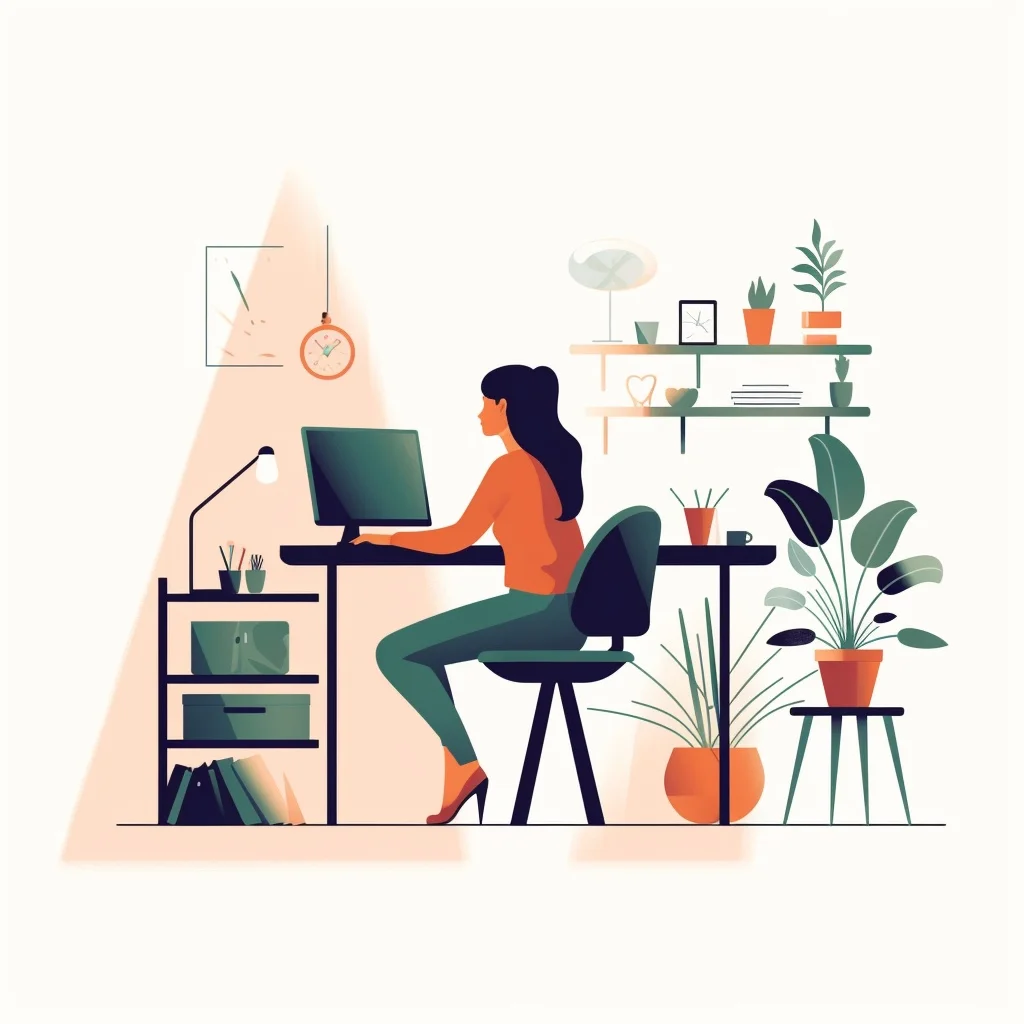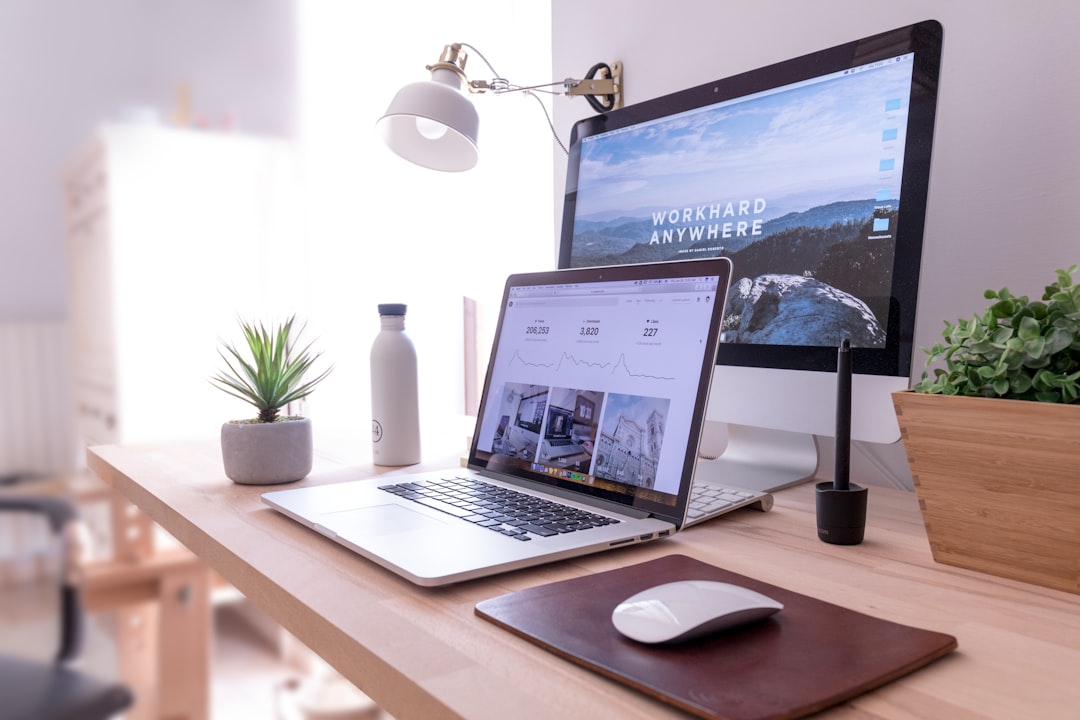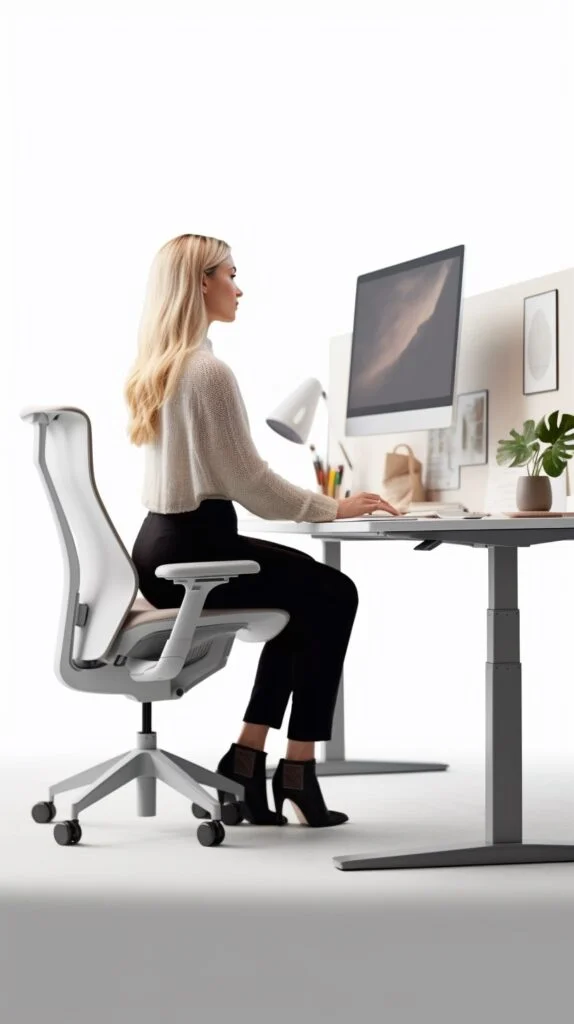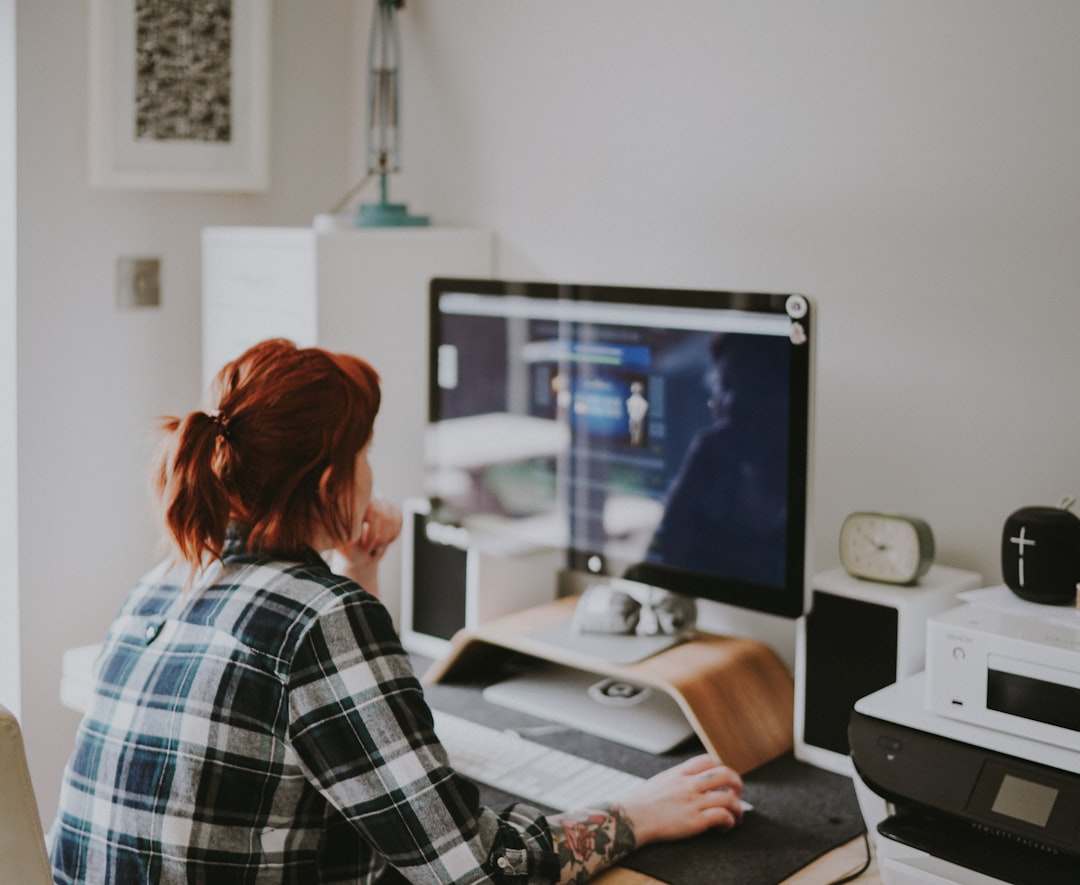Home office safety is a crucial aspect of working from home effectively, yet it’s easily overlooked. With the sudden necessity of remote work over the past few years, more and more people have not only set up shop at home, but continue to work there by choice. While this can have many benefits like increased flexibility and a better work-life balance, it also poses new challenges, especially when it comes to maintaining a healthy work environment. Here are a few key best practices and home office safety tips telecommuting employees should consider.
Table of Contents
Why Safety Concerns Matter
The shift to remote work has significantly increased the number of people who work from their living space, making it more vital to address potential risks associated with this new environment. It may seem banal, but that old adage that most accidents happen at home really is true. Failure to prioritise safety can lead to physical injuries, mental stress, and diminished productivity. This can not only take a toll on your well-being, but also the overall performance of your business.
By recognising that home office safety is more than just a trivial matter, we can underscore the importance of establishing a secure, comfortable, and efficient workspace that benefits employees and employers alike. Creating more safety awareness is essential for maintaining a high level of performance. It also reduces the risk of injury, and ensures that remote work remains a viable and sustainable option for the long term.
Let’s not forget it’s vital for self-employed individuals and freelancers to acknowledge the significance of home office safety as well. Their well-being and productivity are equally tied to their business success! By prioritising a secure and efficient workspace, independent professionals can also optimise their performance and safeguard their livelihood. And that means they can sustain and grow their ventures in the ever-evolving world of remote work.
Essential Home Office Ergonomics and Safety Tips for Productivity and Wellness
I’ve been working remotely since 1997. High up on my list of home office safety tips are ergonomics. Sitting at a desk for prolonged periods of time can lead to a host of health problems. Back pain, neck pain, and carpal tunnel syndrome are common ailments.
The human body was not actually designed to sit – it was meant to squat, stand, and move all day! To avoid the issues a sedentary seated position causes, it’s important to create an ergonomic workspace. This includes investing in an adjustable office chair, a desk with the right height, and ergonomic peripherals that are designed to reduce strain.
Setting up your physical workspace so you feel good in it is so vital. When you’re uncomfortable at work, it’s much more difficult to focus on your daily tasks.
One big part of maintaining a healthy work environment in your home is to actually have a dedicated workspace. I discuss this further below in the extra working from home safety tips for folks who are new to working remotely. It essentially means finding a quiet, well-lit area in your home where you can avoid distractions. Some employees’ remote workspaces might still need some tweaking here, too.
Create an Ergonomic Desk Setup to Prevent Strain and Injury
At the bare minimum, you should have a desk, chair, computer, and a monitor. An often overlooked, yet crucial, aspect of an ergonomic setup is the height of your desk. It should be at a level that allows your elbows to rest comfortably at a 90-degree angle while typing or using the mouse, with your wrists straight and your shoulders relaxed. If the desk is too high, it can lead to shoulder strain. If it’s too low, you might find yourself hunching forward.
Adjustable desks are a fantastic solution as they can be customised to your height and preferred seating position. Some models even allow for standing work. This is a great way to offset the potential health risks of prolonged sitting.
Now, about your monitor. Slouching over a laptop screen everyday is a good way to land in physical therapy. And as someone who’s permanently in PT, I’m speaking from experience when I say you don’t want to do that to yourself!
So do your neck and back a favour and plug your notebook into a big screen. Make sure your computer monitor is positioned at the appropriate distance and height so that you’re not putting unnecessary strain on your neck and shoulders.
Adjust your monitor so that your eyes are level with the top row of text, at the top third of the screen. You also don’t want to be sitting too close to it. If you find it’s still too low, there are some great looking screen stands out there to match a wide range of decor styles.
I personally use a HiRise stand for precisely this reason, and I love it. It blends in perfectly with my old Apple Thunderbolt display.
Quick test: Stretch your arm out in front of yourself. If you can touch your screen, you’re sitting too close. Move it back so it’s about 20-30 inches away from you.

You’ll also need some basic accessories like a keyboard, mouse, and desktop light, which we’ll get into further below. These should ideally be ergonomic, so opt for the best choices in your budget range.
Level Up Your Lighting
Another key aspect of home office safety is proper lighting. Poor lighting can lead to eye strain, headaches, and fatigue. To avoid these problems, make sure your space is well-lit, with natural light if possible. If natural light is not available, invest in high-quality task lighting to supplement the light in your workspace.
Additionally, it’s important to position your computer screen away from glare and reflective surfaces. This also helps reduce eye strain and prevent headaches.
I’m struggling with this lighting issue myself in my own home office. Even though I have the blinds down, there’s too much natural light coming in from the south-facing windows behind me. This makes it difficult for me to see the screen when the sun is high. Because there’s nowhere else I can move the desk to, I’m considering upgrading my blinds to the black-out version. Either that or I have window foil affixed to the glass panes themselves so as to keep more light out.
Set Up Your Desk Space to Support Neutral Posture
When assessing your desk space setup, you’ll want to consider posture for proper ergonomics and overall well-being. Again, a suitable chair with adjustable height, armrests, and lumbar support is essential for maintaining a neutral posture to avoid back and neck pain. Your desk should be at a comfortable height that allows for the arms to rest at a natural level, with adequate clearance for your knees.

If you’ve positioned your screen correctly in our previous step so that it’s at eye level, you’ll better be able to avoid slouching or leaning forward. Using a separate keyboard and mouse also helps prevent wrist strain. These simple steps can help to reduce the risk of developing musculoskeletal disorders and promote overall home office safety.
If I could time travel to when I began telecommuting and became sedentary, I really would have taken better care of my neck, back and wrists. I always advise my younger colleagues in particular to take their desk setup seriously. They have time on their side and thus the best chance of preventing chronic pain later on in their lives.
By creating a comfortable and supportive environment, you really can prevent a slew of physical problems later on in middle age.
Ergonomic Recommendations for Laptops and Computer Workstations
Have you ever thought about how much time you actually spend sitting in front of a computer? That’s where your actual workstation comes in. We’ve already discussed your desk, monitor and chair, but what about your peripherals?

In terms of your keyboard, an ergonomic design that accommodates natural hand and wrist positioning is ideal. Some keyboards come with a slight curve or are even split into two halves. This can help maintain a more neutral wrist position while typing. You’ll want to position your keyboard at a comfortable distance where your elbows can rest at a 90-degree angle. Your wrists should remain straight. Wrist rests can also provide support during breaks. Just don’t use them while typing as they can lead to undue pressure and strain on the wrists.
Picking the Right Input Devices

When it comes to your mouse or trackpad, ergonomic designs are also essential. An ergonomic mouse is designed to fit the natural shape of your hand. It minimises the need for excessive wrist motion or overly firm gripping. If you’re using a trackpad, try to keep your wrist straight and move your whole hand, rather than just your fingers. Mouse and trackpad should be positioned close to the keyboard to prevent overreaching and should be used at a sensitivity level that doesn’t demand extensive or forceful movements.
Additionally, consider investing in an ergonomic stylus if you use a touchscreen frequently. These devices can reduce the amount of finger pressure needed and can help prevent repetitive strain injuries.
Lastly, it’s worth noting the importance of taking regular breaks. Regardless of how ergonomically designed your workstation is, continuous use of these input devices can lead to strain and fatigue. Regularly stretching and moving your hands and fingers can help maintain circulation and prevent repetitive strain injuries.
Remember, everyone’s body and comfort levels are different. What works best for one person may not work for another. It’s important to listen to your body and adjust your workspace accordingly. It took me multiple orders on Amazon to get the right mechanical numpad that felt good for me, for example. Don’t feel shy about sending back an order if it doesn’t work for you. Just be sure to handle the items with care and hang on to the original packaging while you test them.
Tips to Help Newbies Working at Home

If you’re totally new to the #wfh game, be sure to check out my article with 10 essential tips for setting up your first home office. Five big things you’ll want to make sure you address are:
- Setting up a dedicated workspace. One of the most important things you can do to maintain a safe and healthy work environment is to set up a dedicated workspace. This means finding a quiet, well-lit area in your home where you can work without distractions. This could be a spare room, a corner of your living room, or even a closet. The important thing is to choose an area that is comfortable and conducive to your work and well-being.
- Establishing a routine. Another important aspect of staying healthy at home when you’re working is to establish a routine. This means creating a schedule and sticking to it. Take frequent breaks to move your body, and be sure to take time for self-care, too. Eating a healthy lunch outdoors or going for a walk on your coffee break can do wonders. Establishing a routine simply helps you stay focused and productive, and it also prevents digital burnout down the road.
- Minimising distractions. One of the biggest challenges of working from home is minimising distractions. Whether it’s your phone, your email, kids, pets, the DHL delivery guy, or the TV, there are a lot of things that can pull your attention away from your work. To minimise distractions, employees might want to use noise-canceling headphones or white noise to block out background noise. I find it also helps to turn off the doorbell during work, close unnecessary tabs and apps on my computer, and try to limit my social media use during work.
- Prioritising self-care. It’s so essential when working from home! Take regular mental health breaks, and be sure to use ergonomic tools to prevent injury as we discussed above. Using a standing desk, an ergonomic mouse and keyboard, and an adjustable chair can all help to reduce the strain on your body. Additionally, make sure you get enough sleep, eat healthy meals, and get fresh air.
- Setting clear boundaries. Working from home can be challenging, especially if you have children, flatmates, or family members in the house. To maintain a safe and healthy work environment, it’s important to establish clear boundaries between your work and personal time. Communicate with your family or roommates about your work schedule, and try to set a plan that works for everyone.

Mind Your Posture
Maintaining proper posture is important for your overall health. A sedentary lifestyle and long hours spent at computers and on mobile devices have contributed to a rise in back pain, neck pain, and other musculoskeletal disorders. Sitting in a chair, hunched over a laptop for extended periods can negatively affect the spine. It causes damage to your discs and leads to chronic pain. Ouch!
It’s therefore important to check your posture regularly and make adjustments as necessary. Sit up straight, keep your shoulders back, and align your ears with your shoulders.
Your feet should be flat on the floor, and your knees should be level with your hips. If you’re sitting on a chair, make sure it supports your lower back and has adjustable arms to support your forearms and elbows.
To create a comfortable workstation, adjust the height of your chair so that your eyes are level with the top of your screen.
Additionally, take breaks every thirty minutes to stand up, stretch, and move around. By being mindful of your posture, you can promote better spinal health and prevent musculoskeletal problems.
Remember, prevention is always better than treatment, so make good posture a priority in your work and home life. I suffer from painful orthopaedic issues myself. If I could turn back time to fix my desk setup and posture in 1997, I certainly would.
Be Proactive About Regular Stretching
More employees are working in sedentary positions for extended periods of time than ever before. The good news is that regular stretching can play a crucial role in maintaining the health of their muscles and joints. It would be great if employers encourage employees to make stretching top of mind, but alas, most of them don’t.
Not only does stretching improve your flexibility and range of motion, but it can also help reduce the risk of injury. With prolonged sitting being a leading cause of poor posture, it’s essential to incorporate at least a little time for movement into your daily routine to prevent related strain and injuries.

And if you have a workforce yourself, it really is your responsibility as an employer to encourage employees to prioritise their health and well-being no matter where they work. So offer them tips that emphasise safety and bodily health. Ultimately, it is only through a proactive approach to health and safety that you can ensure your staff can continue to perform at a high level.
Home Office Safety Tips to Reduce Hazards and Increase Your Peace of Mind

We’ve focused on desk setup and health aspects so far, but it’s also imperative to ensure that your home office environment is hazard-free.
I’m not just talking about having a functioning fire extinguisher on hand (which you should!). There are also silly things that cause accidents. Like tripping over stuff on the floor. Or blowing out a fuse because you have 15 extension cords running into one outlet. Not to mention a slew of cybersecurity issues in today’s online landscape.
Hazards can be found in any workspace, but the danger of feeling too relaxed within your own four walls can lead to a fair degree of complacency when it comes to your personal safety.
Your home office should be considered a place of work. So treat it with the same level of safety precaution as an office outside of your home. The layout, furniture, lighting, and equipment can all pose potential hazards.
Do a thorough assessment to identify any potential dangers and then take appropriate steps to mitigate them. Electrical hazards can be avoided by semi-regularly checking your plugs, power strips, and surge protectors for any damage.
Keep an eye on your computer and other electronics for signs of overheating, too. When working in an office environment, it’s generally easier to take safety measures for granted. However, you also need to stay aware of these things when you’re a work-from-home employee.
Can Your Electrical System Handle Office Equipment?
The electrical system of any workspace needs to be able to power office equipment. If the electrical system is not able to handle the necessary energy requirements, there could be a risk of damage to equipment, electrical fires, or even electrocution.
If you’re running NAS RAID drives, a printer, your computer, a couple of screens, some battery chargers and what not, you want to make sure your sockets are up to code and functioning properly. It’s not only important for your safety, but for the longevity and efficiency of your equipment.
Don’t Daisy Chain Extension Cords
To minimise the risk of electrical fires, also be sure to follow the proper guidelines and regulations for using extension cords and power strips. One of the most important rules to remember is that they shouldn’t be daisy chained. This means you shouldn’t plug one extension cord into another to extend its reach. This is an unsafe practice as it can lead to overheating, overloading and possibly even a fire.
Another critical aspect to consider is that no permanent extension cord should be in use. Although it may seem convenient to use the same extension cord every day, it can lead to frayed or damaged cords which are extremely dangerous.
Keep cords organised and out of the way to prevent tripping hazards. Don’t overload outlets or use damaged cords or plugs, either!

Keep the Floors Clear
Speaking of tripping hazards, ensuring that the floors are clear and free from tripping pitfalls should also be on your safety checklist. Avoid leaving folders, paperwork, or office supplies scattered on the floor.
Even if your desk has no drawers, there are other clever ways to keep things organised. Cables can be kept in check with cable clips or ties to keep them out of the way.
Also make sure that any rugs or mats in your work area are lying securely flat. You don’t want to trip and go flying because of a wrinkle in an area rug.
Protect Your Digital Data and Files
I would be remiss if I didn’t mention file and data security in this post. It’s a serious matter in our digital world, especially given the rising spread of cybercrime.
To protect your information—and your employer’s—it’s essential to keep data safe. Doing so limits your risk of exposure to data breaches, hacks, and other malicious activities that can compromise data integrity and confidentiality. Of course you want to be consistent with your digital filing, but keeping your data safe takes more. Adhering to basic cybersecurity practices such as using strong passwords, regularly updating software, and avoiding phishing attacks goes a long way in preventing unauthorised access to your system.
Many employees working from home will be outfitted with a VPN or internal tools and measures to keep their system protected. If you’re not, or if you’re self-employed like I am, plenty of short guides to keeping your employer’s (and client’s) data safe are just a Google search away.
Everyday Cyberthreat Defense Tactics

Cyberthreats like virus malware, phishing, and hacking put home offices at risk just as much as the regular workplace.
Remote employees should take some extra precautions to secure their network. For one, use antivirus software and a firewall to prevent unauthorised access. Enable multi-factor authentication whenever possible, especially for email, banking, and file storage access. And always be wary of phishing emails and malicious links.
Do regular backups so that you’re covered in case anything ever goes wrong. And never click links or download attachments from unverified or suspicious senders.
Watch for signs of compromise like popups, computer lagging, links sent by text to your phone, or strange login attempts.
Stay alert for scams aimed at remote workers that spoof teleconference invitations or payroll info requests. And practice good password hygiene using a password manager! You should ideally have different, very complex passwords for each individual account you have. The password manager will remember them for you.
Though malware and hackers don’t physically enter your home, cyberthreats are real risks for those with sensitive data or network access.
Taking the above steps really minimises your chances of becoming a victim. Your employer’s security depends on the weakest link, and that doesn’t have to be you. Staying vigilant about digital defenses protects your paycheck and personal data, as well as company resources and your remote coworkers.
Understand Your Worker’s Compensation Rights as a Remote Employee
You had an accident during work… but at home. Now what?
As a remote employee, you may face health and safety issues just like those in a traditional office, but you probably also have important protections. Remote workers are typically entitled to worker’s comp benefits for injuries that occur in the course of their work duties, even when working from home.
If you sustain an injury while telecommuting, document the details including the time, location in your home, and how the injury happened. Notify your employer of the injury as soon as possible. While minor injuries may seem unimportant to report, it establishes your claim should medical issues arise or persist.

Pursuing worker’s compensation for a home office injury can be different depending on what country you live in. You will likely need to file a claim of some sort, often through your employer’s insurance provider. You may need statements from doctors confirming your injury is work-related.
Your home office is still a worksite, so you deserve coverage for injuries arising from work activities.
Though home injuries may seem less obvious, remote employees deserve support. Your company should provide guidelines for ergonomics and safety, check-ins on challenges, and medical care for injuries. A work injury anywhere can seriously impact both employees and companies. Proactively addressing telecommuter health and safety benefits both individual wellbeing and overall productivity.
Definitely take steps to prevent injuries during working hours, but don’t be shy either about reporting issues early or pursuing employee’s compensation to safeguard yourself. Doing so also helps motivate employers to provide for remote worker wellness.
A safe home office, like any workspace, is a shared responsibility.
Stay Safe as a Remote Worker
In conclusion, working from home presents a unique set of challenges when it comes to maintaining a safe and healthy work environment. By following these commonsense home office safety tips, you can ensure that your work space is comfortable, well-lit, hazard-free, and conducive to both your productivity and well-being.
FURTHER READING
If you’d like even more tips on setting up your home office or staying productive when working out home, don’t miss my 10 Essential Tips for Setting Up Your First Home Office and Working From Home Effectively: 10 Tips From an Expert.
It’s important to remember that even if you have been working from home for a long time, it’s still essential to stay up-to-date with safety guidelines and to be aware of your surroundings.
Safety first should always be at the forefront of your mind, so that you can continue working safely from home. And, regardless of your experience working from home, always remember to pay attention to your body. If you are experiencing any pain or discomfort, it’s important to address it immediately, to avoid long-term complications.


























Leave a Reply